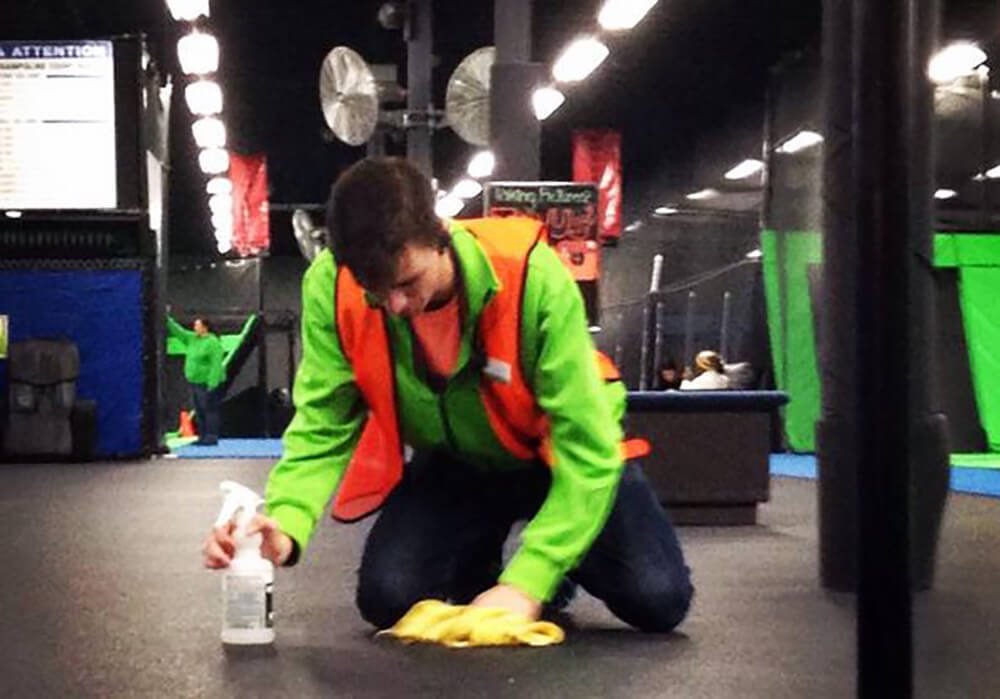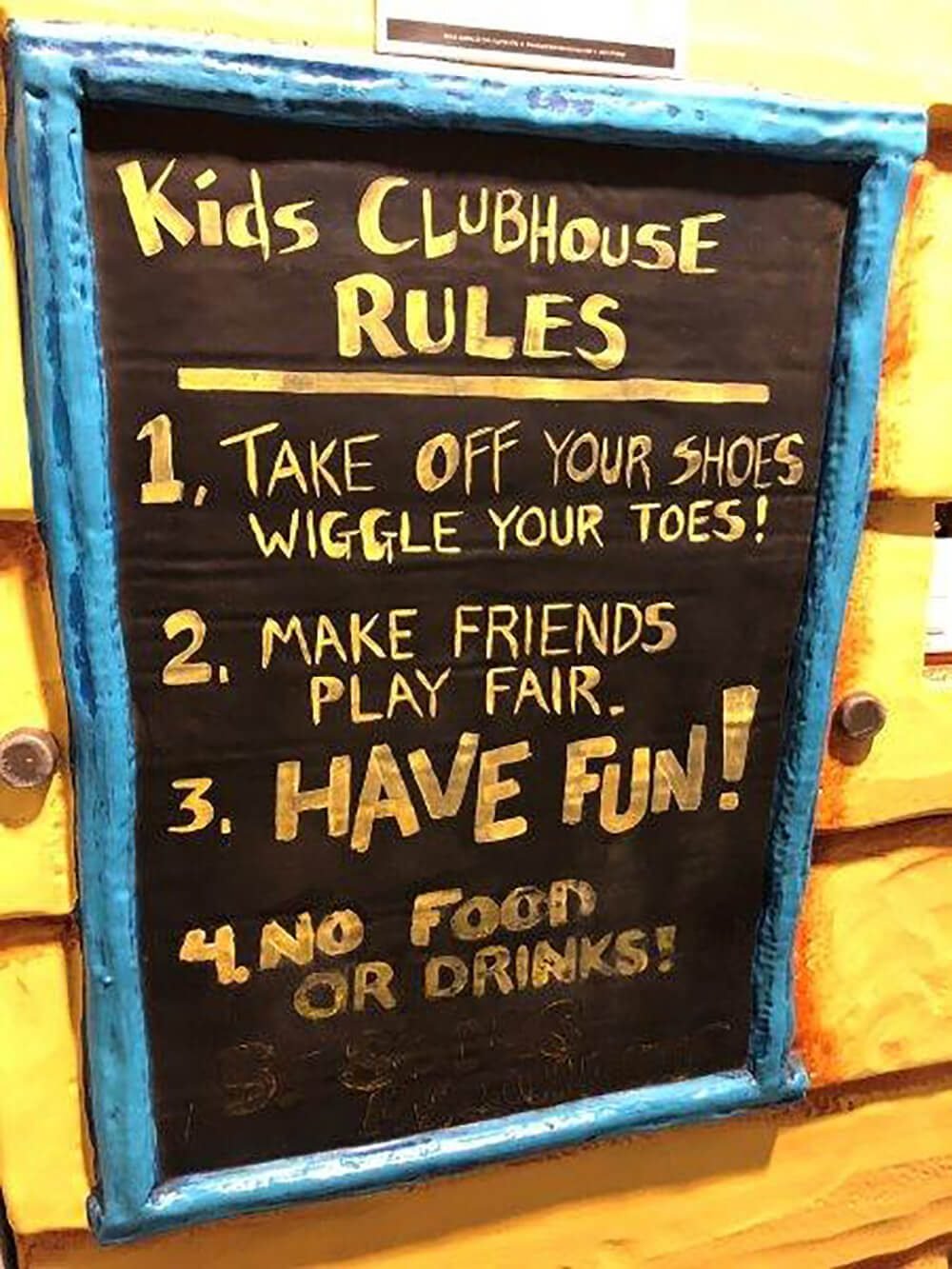Imagine this: A child eagerly rushes into an indoor playground, laughter bubbling up as they dash towards the colorful slides and climbing structures. But what if, instead of a pristine, welcoming environment, they are greeted with grime, sticky surfaces, and an unpleasant odor? As a business owner, you understand that the reputation and success of your indoor playground depend on the satisfaction and safety of your young patrons. Ensuring a clean and sanitary environment is paramount, not only for health reasons but also for maintaining a positive customer experience.
Keeping your indoor playgrounds clean requires a proactive approach that includes creating a regular cleaning schedule, taking precautions (such as setting up handwashing and sanitizing stations, establishing a no-shoes rule), and prompt maintenance.
By adopting these strategies, you can ensure that your facility remains a safe and enjoyable space for children to play.
1. Create a Regular Cleaning Schedule
A regular cleaning schedule is the foundation of any effective maintenance program. This includes daily tasks such as wiping down frequently touched surfaces, vacuuming floors, and disinfecting toys and indoor play equipment. By regular cleaning, it can help prevent dirt and germs from accumulating in your indoor park, providing a healthier environment for children and staff.
Daily Cleaning
Daily cleaning should focus on high-traffic play areas and surfaces that children frequently touch. You can wipe down slides, stairs, and railings with a mild soap and water solution, or use a disinfectant cleaner since it is safe for use on indoor play structures. Making sure floors are vacuumed or mopped daily will also help maintain overall hygiene.
Weekly Deep Cleaning
In addition to daily cleaning, you will also need to perform a more thorough deep cleaning every week. You will need to disinfect all children's indoor play equipment, disinfect the bathroom, and clean those harder-to-reach areas that may have accumulated dust and dirt over time. Make sure even the hard-to-reach areas are kept sanitary.
Monthly Inspections
Monthly inspections are essential to identify potential maintenance issues and ensure that cleaning regimens are effective. During these inspections, all play equipment should be checked for damage and any necessary repairs should be made promptly. This helps keep your playground clean and safe.
2. Take Precautions
The need for intensive cleaning can be greatly reduced by taking preventive measures. You can set up disinfecting stations at the entrance and throughout the indoor playground to encourage children to practice hand hygiene. In addition, you will also need to establish some park rules, such as taking off shoes before entering the indoor playground and always wearing socks.
Hand Sanitizing Stations
You can place hand sanitizing stations at entrances or even throughout your playground to encourage children and adults to clean their hands regularly and reduce the spread of germs.
No-Shoes Policy
You can establish a no-shoes rule in your play area, which can help prevent dirt and debris from being brought in. Additionally, you can provide non-slip socks or a designated shoe storage area to facilitate this policy.
Designated Snack Area
To avoid messes, you can designate a specific area for eating or drinking. You need to make sure these areas are equipped with trash cans and cleaned regularly to prevent attracting pests and spreading bacteria.
3. Prompt Maintenance
It is important to promptly address maintenance needs of your soft playground, as damaged equipment is not only more difficult to clean, but also unsafe. Regular inspections can help detect problems early so that repairs can be made promptly and ensure that your indoor playground is always in top condition.
Equipment Inspection
You need to regularly inspect your play equipment for signs of wear and tear. Make sure all clips, screws and other fasteners are secure and that there are no sharp edges or broken parts.
Safety Checks
You need to carry out a safety inspection to ensure that all areas of your playground are free of hazards. This includes checking for loose flooring, ensuring safety mats are intact and verifying that all play structures are stable and secure.
Facility Checks
Check the entire facility, including restrooms, snack areas, and common areas. Make sure all surfaces are clean, trash is properly disposed of, and there are no potential hazards.
At Lebo Play, we understand that keeping an indoor playground clean is more than just following a checklist; it’s about creating a safe and enjoyable environment for children to play and explore. But how do you ensure all of these elements are managed consistently? Let’s dive into the practical steps and guidelines that can help you achieve this.
What is a Playground Checklist?
An indoor playground inspection checklist is a valuable tool for maintaining high cleanliness and safety standards. This comprehensive checklist of tasks ensures that nothing is missed during the cleaning and maintenance process.
Here are some key elements that are typically included in an indoor playground inspection checklist:
1. Daily Checklist
- Check all play equipment for damage or wear.
- Ensure safety mats and padding are properly positioned.
- Clean and disinfect all high-touch surfaces (slides, handles, etc.).
- Sweep and mop floors.
- Empty trash bins and replace liners.
Refill hand sanitizer stations.
- Spot clean any messes.
- Ensure restrooms are clean and stocked with supplies.
- Monitor play areas for overcrowding and safety compliance.
- Perform a final cleaning of all surfaces.
- Secure and lock all equipment.
- Check and secure all exits and entries.
- Verify that all toys and equipment are properly stored.
2. Weekly Checklist
- Thoroughly clean all indoor play structures, including tunnels, nets, and ball pits.
- Wash soft play mats and covers.
- Disinfect all toys and loose equipment.
- Check for loose clamps or screws and tighten them.
- Inspect safety pads and replace if necessary.
- Test all interactive features to ensure they are functioning correctly.
- Check HVAC filters and replace if needed.
- Clean windows and mirrors.
3. Monthly Checklist
- Perform a thorough inspection of all play equipment to ensure structural integrity.
- Check flooring for wear and tear.
- Check the condition of all signage and replace if faded or damaged.
- Test all fire alarms and emergency exits.
- Review and update emergency procedures.
Deep clean your air ducts and ventilation systems.
4. Seasonal Checklist
- Rotate or update play equipment as needed.
- Reassess safety standards and make adjustments based on the latest guidance.
- Perform a thorough deep clean of the entire facility, including hard-to-reach areas.
- Steam clean carpets and upholstery.
- Retraining on safety protocols and cleaning procedures.
- Review customer feedback.
5. Record Keeping
Last but not least, you need to keep a log of all inspection, cleaning and maintenance activities and record any incidents or repairs.
How Often Do Soft Play Areas Get Cleaned?
Daily. Soft play areas should be cleaned daily to maintain hygiene and safety.
This includes wiping down all surfaces, including slides, stairs, railings and other high-touch areas, with a mild soap and water solution or a disinfecting cleaner approved for use in play structures. Daily cleaning helps remove dirt, dust and germs, ensuring the play environment is safe for children.
In addition to daily cleaning, soft play areas should undergo a deeper cleaning and sanitization process weekly. This involves disinfecting all play equipment, sanitizing restrooms, and cleaning less accessible areas. Monthly inspections should also be conducted to identify and address any maintenance issues.
What Does a Safe Playground Look Like?
Safe indoor playgrounds are designed with a focus on minimizing risks and ensuring a clean, safe and fun environment for children. The following are several key safety elements in its design and operation:
1. Age-Appropriate Equipment
You need to make sure that your indoor playground equipment is appropriate for the age group of the children who will be using it. This will help prevent accidents and ensure that children can enjoy the playground safely.
2. Proper Surfacing
Use appropriate surface materials, such as soft floor mats or safety mats, to protective nets to reduce the risk of injury.
3. Rounded Edges and Padding
Make sure all equipment has rounded edges and adequate padding to prevent injuries.
4. Clear Sightlines
Maintain clear sight lines throughout the indoor playground so supervisors can easily supervise children.
5. Secure Entrances/Exits
Make sure entrances and exits are secure and monitored to prevent unauthorized access and keep children safe.
6. Separation of Areas
Create separate areas for different age groups and activities to prevent collisions and ensure children can play safely.
7. Proper Lighting and Ventilation
Make sure your indoor children’s playground is well lit and ventilated to create a safe and comfortable environment for children and caregivers.
Conclusion
Keeping your indoor playground clean and safe is an ongoing effort that requires diligence and commitment. At Lebo Play, we are committed to helping you create an environment where children can play and explore safely. By following a consistent cleaning regimen, taking preventative measures, and addressing maintenance needs promptly, you can ensure that your indoor playground remains a welcoming and safe space for everyone.
For more tips and insights on maintaining your indoor playground, stay tuned to our blog. Together, we can create play spaces that are not only fun but also safe and clean for everyone to enjoy.



